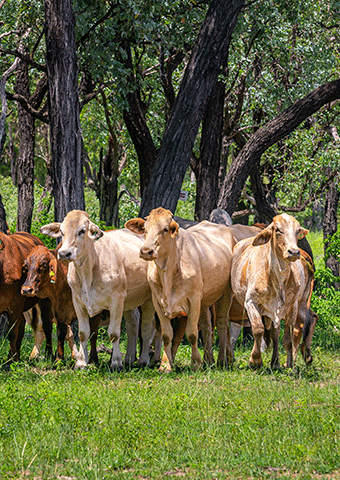
Case Studies of the Financial Performance of Silvopastoral Systems in Southern Queensland, Australia
There is considerable uncertainty surrounding the future availability of hardwood timber from state-owned native forests in southern Queensland. The timber industry is becoming increas-ingly reliant on private native forests, where much is on properties primarily managed for beef cattle grazing. Historically, these forests have been periodically high-grade harvested without silvicul-tural treatment or cleared to increase pasture production where landholders have the right to do so. This study compares these traditional forest management practices at four case study properties against silvopastoral system alternatives. Merchantable timber, pasture and cattle production was estimated for each management scenario with a native forest silvicultural treatment response model. The net present value of each scenario was estimated over a 20-year management period. For all case study properties, the worst-performing forest management scenario was to clear forest for grazing. Investment in silvopastoral systems in southern Queensland was found to be financially attractive, particularly when silvicultural treatments were implemented in year zero to increase timber production. Silvicultural treatments increased the mean annual increment of merchantable timber over 20 years by an average of 1.3 m3/ha/year relative to the scenario where no management was performed in year zero. Forest management scenarios with silvicultural treatments had better financial performance than scenarios without silvicultural treatment. However, long payback periods and sovereign risk are serious impediments to silvopastoral system adoption in southern Queens-land. If these concerns can be overcome, private native forests have the potential to be sustainably managed to improve the financial performance of farms, improve regional employment and income generation, supply Queensland’s future hardwood timber needs, and increase carbon sequestration and biodiversity conservation on private land. © 2022 by the authors. Licensee MDPI, Basel, Switzerland.
ID:
2567
Authors:
Ben Francis, Tyron Venn, Tom Lewis, Jeremy Brawner
Journal:
Forests
Volume:
13
Issue:
2
Year:
Resource Type:
Research article
Geographic Coverage:
Copyright:
Gold Open Access
DOI:
10.3390/f13020186
Open Access:
Gold Open Access
There is considerable uncertainty surrounding the future availability of hardwood timber from state-owned native forests in southern Queensland. The timber industry is becoming increas-ingly reliant on private native forests, where much is on properties primarily managed for beef cattle grazing. Historically, these forests have been periodically high-grade harvested without silvicul-tural treatment or cleared to increase pasture production where landholders have the right to do so. This study compares these traditional forest management practices at four case study properties against silvopastoral system alternatives. Merchantable timber, pasture and cattle production was estimated for each management scenario with a native forest silvicultural treatment response model. The net present value of each scenario was estimated over a 20-year management period. For all case study properties, the worst-performing forest management scenario was to clear forest for grazing. Investment in silvopastoral systems in southern Queensland was found to be financially attractive, particularly when silvicultural treatments were implemented in year zero to increase timber production. Silvicultural treatments increased the mean annual increment of merchantable timber over 20 years by an average of 1.3 m3/ha/year relative to the scenario where no management was performed in year zero. Forest management scenarios with silvicultural treatments had better financial performance than scenarios without silvicultural treatment. However, long payback periods and sovereign risk are serious impediments to silvopastoral system adoption in southern Queens-land. If these concerns can be overcome, private native forests have the potential to be sustainably managed to improve the financial performance of farms, improve regional employment and income generation, supply Queensland’s future hardwood timber needs, and increase carbon sequestration and biodiversity conservation on private land. © 2022 by the authors. Licensee MDPI, Basel, Switzerland.